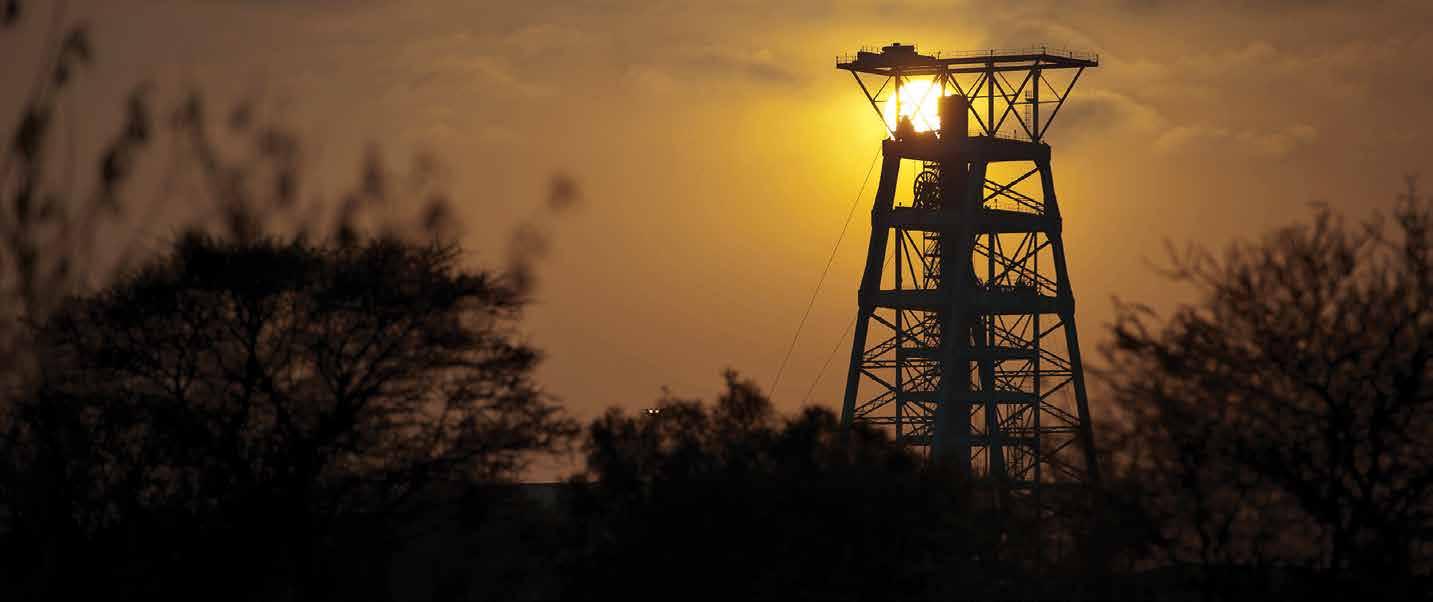
14 minute read
Junior miners make the right moves
JUNIOR MINING

IN SOUTH AFRICA


Making the right moves
By Nelendhre Moodley
The junior mining sector is vital to the overall health of the South African mining industry, especially in keeping it alive and growing. To unpack some of the latest developments under way in the junior mining sector, SA Mining recently caught up with Grant Mitchell: head of the Junior and Emerging Miners’ Desk at the Minerals Council South Africa.
HOW IMPORTANT IS JUNIOR MINING IN SOUTH AFRICA?
Junior miners comprise of explorers, developers and smaller producers.
Exploration companies are essential to the long-term survival of the South African mining sector. Without finding new deposits a mining economy cannot survive in the longer term. Unfortunately this part of the mining value chain has been neglected in South Africa. Currently South Africa’s exploration budget decreased from $404-million in 2007 to considerably less than $100m in 2018 and South Africa’s share of global exploration budgets has decreased to about 1% in 2018.
The state needs to support a high-risk activity such as exploration, which largely relies on venture capital markets, by providing incentives for investment.
The second group under the junior mining category in South Africa are developers who take a known deposit and build the mine with a view to moving on into production. Interestingly, the research done at the Minerals Council on the junior mining sector shows that most junior mining companies in South Africa who are explorers and developers wish to become established as miners in the long term. This is unlike the junior mining sector in Australia and Canada for example, where exploration companies specialise in exploration alone and if they find a deposit, they sell it on to a mining company which then develops the mine.
The third category of junior miners in South Africa consists of smaller and midtier producers who typically buy a small operation with the intention of mining. The Minerals Council defines these producers as having an annual turnover of below R500m per annum. They are found in most mineral commodities – coal, gold, platinum, manganese, chrome and diamonds as examples. The biggest concentration is in coal with many being wholly owned and managed BEE companies.
HOW HAS 2020 TREATED JUNIOR MINERS AND HOW HAVE THEY MANAGED THE PANDEMIC?
2020 has been a di icult year for the junior mining sector. The lockdown earlier on in the year presented junior mining companies with many challenges. A Mentimeter snap online survey conducted under level 3 lockdown with a sample of junior Minerals Council member companies showed that initially testing and screening was a challenge; however this improved as the lockdown continued as more test kits became available. Most of the companies surveyed felt the regulations around COVID-19 were manageable and achievable, however once mining production resumed many had to scale back production due to lack of demand in the markets as well as the inability to raise funding to maintain full production capacity.
Exploration and development projects were particularly hard hit, with most of these projects either suspended or at least reduced in scale.
In terms of producing companies, most of them had to materially defer construction and development projects under level 3, with many companies having to suspend contractors by evoking force majeure.
In terms of mining right applications,
SA’s exploration budget decreased from $404-million in 2007 to less than $100m in 2018. “ “ – Mitchell
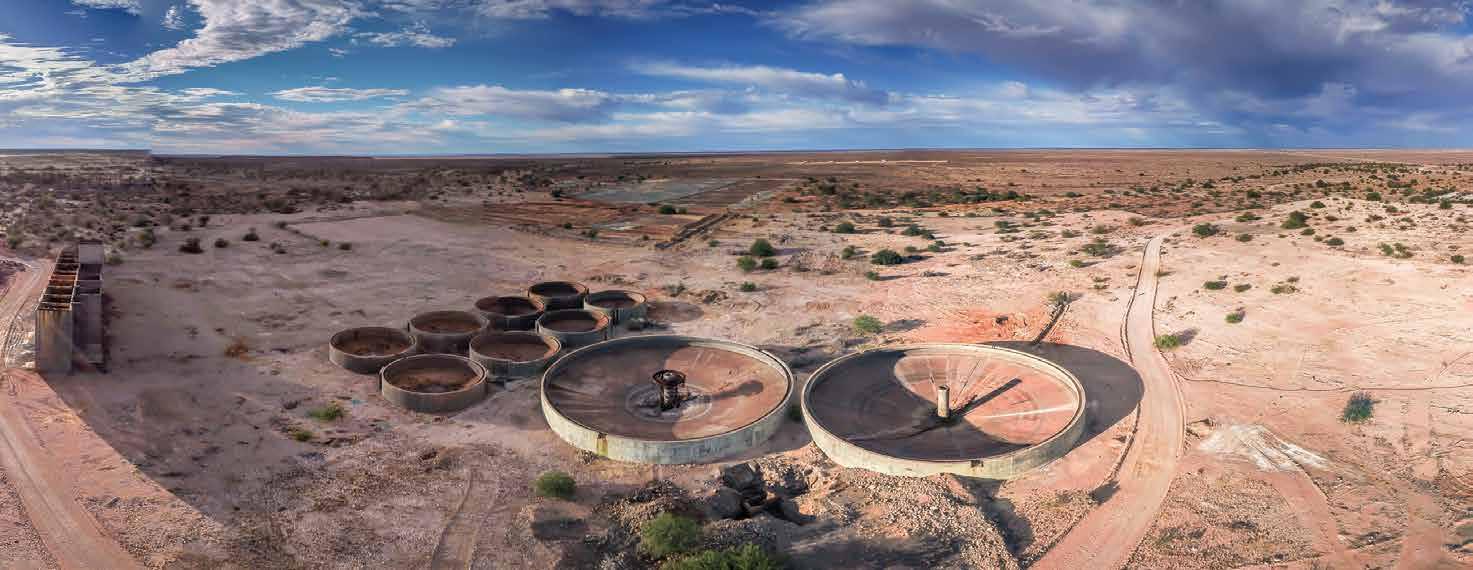
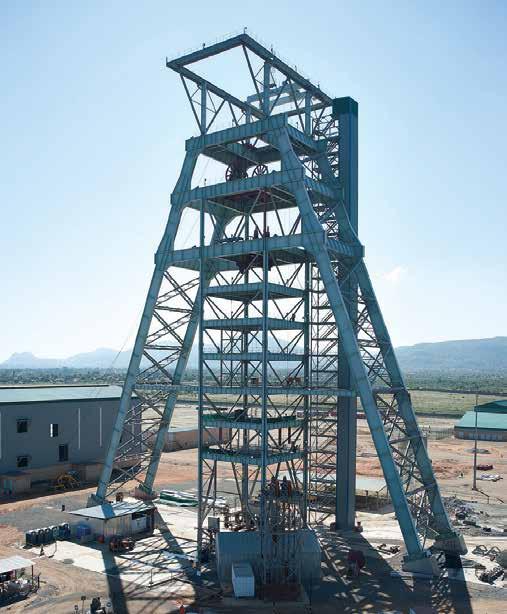
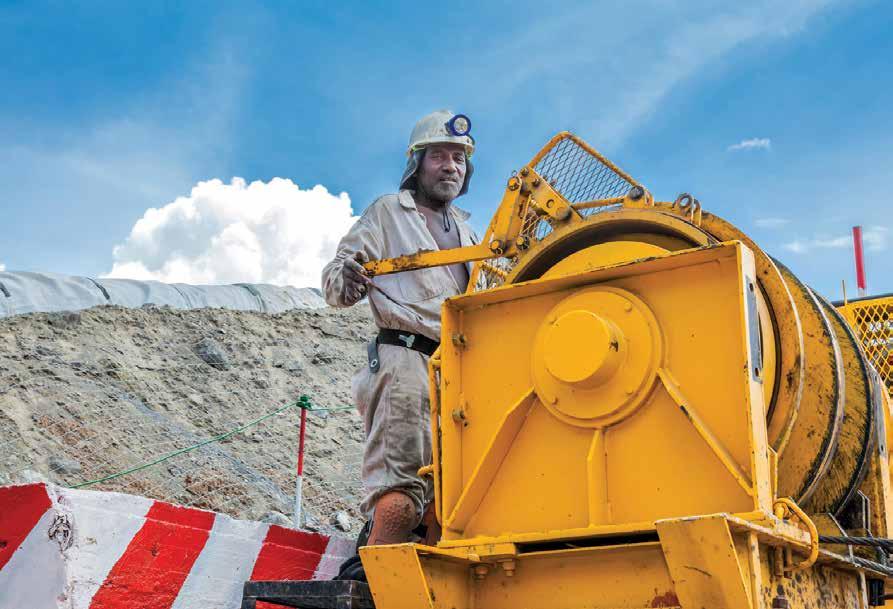

Bauba Platinum’s Moeijelijk Chrome Mine.
most companies that were surveyed indicated that they had experienced delays due to COVID-19. However, TERS/UIF support was forthcoming for employees, with many companies indicating that they had received funding over this period.
Finally, most companies surveyed indicated that they had to recapitalise and/ or apply for bank loans and or were forced to reduce sta .
Despite the challenges, all of the 34 junior mining members of the Minerals Council have survived and are slowly getting back on their feet. One or two companies however have had to go into business rescue.
This clearly illustrates that the junior mining sector is here to stay – they are a hardy bunch of people able to survive tough economic times.
WHAT ARE SOME OF THE EMERGING TRENDS IN THE JUNIOR MINING SECTOR?
A key issue is the demand for minerals post COVID-19 which will impact junior explorers and producing companies. In particular, small-scale diamond producers were extremely hard hit with demand falling away considerably.
Commodities such as platinum group metals, iron ore and gold have been doing well so junior companies involved in these commodities have been able to ride the pandemic better than most other mineral commodities. Copper and nickel, however, have experienced depressed demand with manganese, coal and chrome showing a flattening out of sales.
The Minerals Council junior member companies are involved in all these commodities with the highest concentration in coal.
Orion Minerals’ Prieska project.
HAVE GOVERNMENT OR INDUSTRY MADE ANY MOVES TO HELP JUNIOR MINERS DURING THESE TRYING TIMES?
There is currently an ongoing dialogue with government on how to revive the exploration sector in particular. As part of the president’s revival of the economy post COVID-19 strategy, a number of work streams have been set up, including a work stream on reviving exploration. Chaired by the Council for Geoscience and including the Department of Mineral Resources and Energy (DMRE) and the Minerals Council, a strategy is being developed to capture between 3% and 5% of global exploration dollars within the next five years.
Issues that require attention include the replacement of the current mining and exploration tracking system to a more e icient online tracking system as well as speeding up the mining application process.
It is also critically important in the agreement that was reached with the DMRE that exploration activity, due to its high-risk profile, remain free of BEE obligations in the Mining Charter. This in itself will be an incentive for potential investors.
Another initiative that is being led by the Junior Miners Leadership Forum in the Minerals Council is the introduction of the flow-through share tax incentive system for exploration projects.
Canada has the most successful junior and exploration sector, which has been largely led by the flow-through share system introduced in 1958. The model is basically a tax incentive that provides for the exploration expenditure of the operating company – this tax is foregone in favour of the investor. Put simply, the investor concludes a subscription agreement with an operating company for the issue of and the subscription for a share called a flow-through share. This share provides the investor with all the rights of an ordinary shareholder but also a right to deduct exploration expenditure incurred by the operating company which will reduce its normal tax liability.
Wesizwe’s Bakubung Platinum Mine.
The operating company incurs exploration expenditure which qualifies for a deduction from its taxable income and chooses to renounce a portion or the full amount of such expenditure to the holders of the flow-through shares in the year in which such expenditure has been incurred. The operating company loses its right to deduct such expenditure to the extent that the expenditure has been renounced.
The holders of the flow-through shares then become entitled to deduct their portion of the expenditure renounced by the operating company from their taxable income. This deduction is in aggregate limited to the expenditure incurred by the investor in acquiring the flow-through shares.
This type of incentive system has not just sustained Canada’s mining sector, but the country’s entire minerals value chain – exploration, mining and beneficiation – which have all benefited. From 2000 to 2018 on average Canada attracted $2-billion a year in exploration expenditure. South Africa, on the other hand, has only attracted $194-million annually. Australia almost matched Canada at $1.8-billion exploration expenditure annually.
A model based on flow-through shares has been developed by the Minerals Council and presented to both the DMRE and National Treasury.
There is an ongoing conversation in this regard.
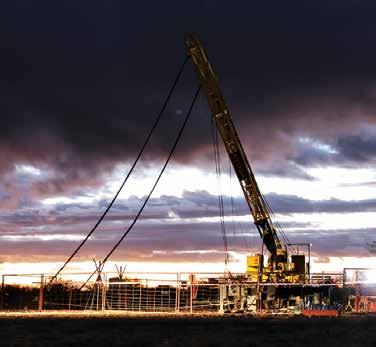
HOW DO YOU SEE 2021 PLAYING OUT FOR EMERGING MINERS?
It is di icult to predict but junior mining companies have demonstrated that they are a hardy group and despite the challenging times have kept going. A lot will depend on the demand for minerals which in turn will depend on the health of the world economy, China being a key player in this regard. Domestically, issues such as a second wave of COVID-19 leading to further lockdowns would a ect the junior sector. However all things being equal, we are cautiously optimistic that the junior sector should be in better health in 2021 than in 2020. ■
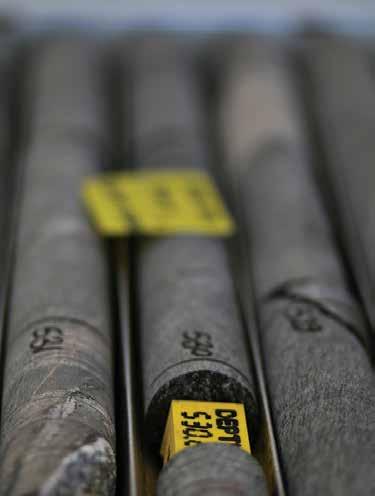

AFRITIN MINING OPERATIONAL UPDATE
AIM-listed AfriTin Mining continues with the Stage I of Phase 1 production ramp-up of its pilot mining and processing facility and recently produced 48.2 tonnes of tin concentrate from its flagship asset, the Uis Tin Mine (Uis) in Namibia. The company is targeting the processing of 45 000 tonnes of ore per month, to produce 60 tonnes of tin concentrate (36 tonnes of tin metal) per month for Stage I of Phase 1. Providing an operational update in November 2020, the African tin mining company said that plant availability and utilisation had increased steadily which, combined with improved plant processing rates, yielded increased plant production. The company was on track to achieve nameplate production of 60 tonnes a month of tin concentrate by the end of 2020.
CEO Anthony Viljoen said that once nameplate capacity was realised, the company would progress towards Stage II, expanding its production levels even further. “AfriTin continues to remain well-positioned to take advantage of the improving tin market fundamentals, as it looks to achieve its vision of becoming a large-scale tin producer in Namibia.”

ORION MINERALS WINS AAMEG AWARD
Australian junior miner Orion Minerals recently received the AAMEG’s inaugural Emerging ESG Leader Award. Orion Minerals is accelerating the development of the Prieska Copper-Zinc Project in the Northern Cape. The winners of the AAMEG Africa Awards (The Australian-Africa Minerals & Energy Group) set the benchmark for Australian mining companies delivering projects that have sustainable and tangible benefits to the communities and countries in which they operate.
The Emerging ESG Leadership Award acknowledged Orion’s exemplary work in the environmental, social and governance (ESG) space, the relationships it has forged with its host communities and its contribution to socioeconomic development in South Africa’s Northern Cape province, the group said. “We hope to inspire a new generation of emerging mining companies. By turning the traditional mining approach to ESG on its head, we have shown the value of meaningful connections and insisting that ESG is a business and moral imperative,” said Orion chairman Denis Waddell.
YOU ONLY LIVE TWICE
2020: THE YEAR OF PERFECT VISION

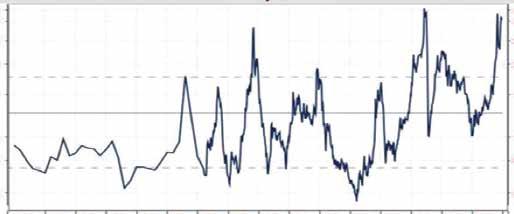
In the James Bond movie You Only Live Twice, long overdue reasons. Hugely destructive and the hero actually does get to live again. But in polluting to mine, even more polluting to burn (as the spoof sequel You Only Die Once, everything well as to wash, transport and dispose of); and to is a disaster and nothing goes right. Which top it o – economically expensive as well. The example does South Africa want to follow? new hydrogen economy is the talk of the town
We certainly know which example it has been following. What will South Africans remember most 20 years from now about 2020 – the Year of Perfect Vision? Obviously they will remember COVID-19, the virus that caused more disruption, unemployment and misery than in any single year they have ever known. © Robert Tshabalala @ Financial Mail with clean, green metals which include platinum at the forefront for fuel cells and hydrogen generation. South Africa never ran out of diamonds and it most definitely never ran out of gold. Internal politics and policies forced the closure of those deposits. But it is external, world policies that are forcing South Africa to get out of coal and try as But is that all they will remember? What the ANC might, this is one battle that it cannot about South Africa’s mining industry? What will Peter Major win. it remember most about 2020? The virus? The Mergence Corporate Fortunately though, nature is going to help. temporary lockdown? Or the raging platinum Solutions Director: Mining Nature has endowed South Africa with more PGMs group metal (PGM) prices? Because 2020 was than even gold – and it is the great usability of really the Year of PGMs for South African miners. those PGMs that will keep global demand for them strong. As a topOn a macro scale, the world will remember iron ore prices even up, nature has provided SA with an abundance of the heavy minerals more than the insane rhodium and palladium prices, and with good ilmenite and rutile for making titanium and zircon, garnet and highreason. The whole world produces iron ore – about three billion quality pig iron as valuable accessory metals. The country has the tonnes of the stu every year – worth over $300-billion in 2020. But world’s third largest vanadium resources – so necessary in a greening, the world only produces 15 million ounces per annum of PGMs, sustainable energy environment. South Africa will never have a which at today’s ungodly prices works out to barely $30-billion a shortage of coal, nor of uranium. But if current trends continue, those year: i.e. 10% of iron ore. two commodities and even oil, and someday gas too, will remain Perspective is everything in the ground until the longin economics and mining. But SA Plat industry $ ton ROM awaited Second Coming. we are South Africa, so we generate nearly $18bn of that 335 300 250 MEAN = 125.863 Stc.Dev. = 51.1979 335 300 250 Who could have guessed the commodity price winners $30bn a year of world PGM 200 200 of a turbulent 2020? Best to revenue. And our platinum 150 150 have just been the lowest cost mines employ almost as many producer (and investor) and let people (170 000) as the next 100 100 nature take its course. But for the two largest local mining sectors 80 80 “other than” passive investment – gold and coal which employ 59 59 professionals – it is critical to about 90 000 people each. So ‘45 ‘50 ‘55 ‘60 ‘65 ‘70 ‘75 ‘80 ‘85 ‘90 ‘95 ‘00 ‘05 ‘10 ‘15 ‘20 always remember: you don’t without a doubt, 2020 in South make money guessing when
Africa was the Year of the PGMs Iron Ore 62% Fe fines $ ton and where a cataclysm is going with 2021 looking like more of 130 120 130 120 to take place. You make your the same. No better sign of the Change 100 100 money, and your name, on how you react when the cataclysm of Times is SA’s Annual Mineral 80 80 occurs. And how you react has
Sales Table. The country ran 60 60 a lot to do with how quickly, on gold and diamonds for 100 ethically and transparently you years from 1880 onwards. But 45 45 react. by 1980 the PGM industry was 41 41 South Africa has done a far overtaking diamonds, as 2014 2015 2016 2017 2018 2019 2020 horrible job of phasing out gold was South Africa’s coal and iron from its commodity mix – just as ore producers. Chrome and the whole world woke up to the manganese eclipsed diamonds by the 1990s. need for a real currency. And SA’s government has done just as bad a But while coal has remained dominant in SA for the past 20 years job at trying to drive down the road of life with eyes glued to the rear of the new millennium, that distinction changed dramatically and view mirror, trying to preserve and promote coal and oil and chasing probably forever in 2020 – the year that coal lost its number one away those investors and others who sought to invest and build newposition. Interestingly, gold lost its place as number one in 2000 – a age energy producers and transmitters. position it held in South Africa and the world for 100 years. Coal lost For heaven’s sake, let’s correct those two huge strategic (and its number one position in 2020 – a er less than 20 years. tactical) blunders before creating and implementing any more PGMs are the clean, green metal of the future (unless you destructive mineral and energy policies and legislation. As James examine where nearly half come from – enormous, terribly Bond says: “You only die once. Make it count.” destructive open pits). Note: At today’s prices rhodium is 45% of PGM miners’ revenue, Coal can only go down from here for a multitude of good and palladium 27% and platinum 20% and 8% is “other”. ■





